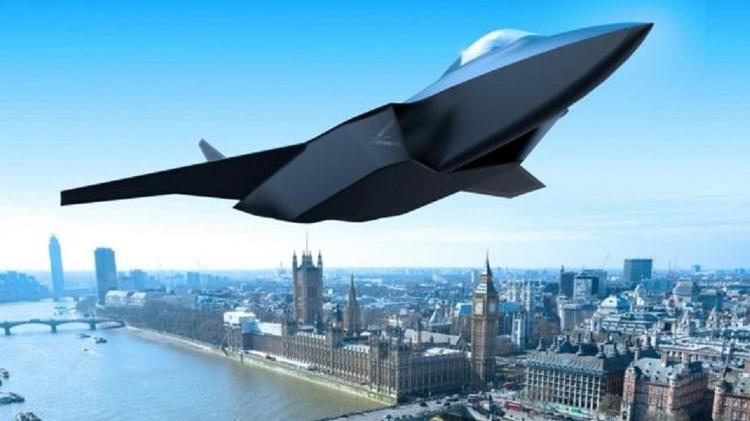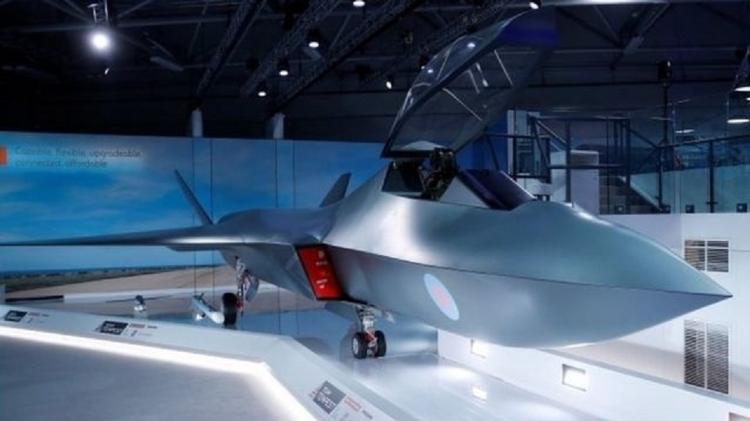The UK, Japan and Italy are partnering to develop a new fighter jet that uses artificial intelligence and features far more modern technologies than current-generation British fighters. The collaboration was announced last week by British Prime Minister Rishi Sunak. He said the partnership would “protect the country from the new threats we face”.
“We are one of the few countries in the world capable of producing technologically advanced warplanes,” Sunak said during a visit to the Royal Air Force (British Air Force).
The countries will jointly develop the Tempest, a next-generation fighter aircraft expected to enter service in the mid-2030s, and is expected to replace the Typhoon fighter aircraft currently in use in the UK.
Development work is already underway. The goal is to create a fighter jet that provides speed, uses common sense, advanced sensors and even artificial intelligence to assist the human pilot when overloaded or under extreme stress.
The fighter jet will also be able to fly on autopilot and, if necessary, fire hypersonic missiles.
Developing such a complex aircraft is extremely expensive – building the F35 jet was the most expensive project ever undertaken by the Pentagon in the United States – so the UK is looking for partners.
Italy was already involved in the project. The addition of Japan is a step forward at a time when the British are tightening ties with their allies in the Indo-Pacific region, worried about China being more aggressive.
Other countries can also participate in the program. France, Germany and Spain are already working together on their own projects, as are the USA.
Companies such as British BAE Systems, Japanese Mitsubishi Heavy Industries and Italian Leonardo will participate in the development of Tempest. Mitsubishi’s FX fighter project has a lot in common with Tempest.
A fighter who ‘reads the pilot’s mind’
One of the most anticipated features of the new fighter is an artificial intelligence (AI) tool that can “read your mind” to assist the pilot.
Sensors in the pilot’s helmet will monitor brain signals and other medical data. Thus, in successive flights, the AI will accumulate a huge database of biometric and psychometric information.
This unique library of piloting features means that if sensors indicate it needs help, onboard artificial intelligence can step in and help. For example, artificial intelligence can come into play if the pilot loses consciousness due to high gravitational forces.
The company BAE Systems said a demonstration jet will be ready at its UK factory by 2027 and that some of these technologies could be tested.
Tempest warriors will mark the beginning of a number of different new digital technologies among 60 different projects being worked on.
The image of the Tempest plane has changed since the first photos were released in 2018. Among other things, its weight has been reduced and its contours have become thinner.
When it’s finally made available, Tempest will likely travel with drones described as ‘assistant’.
Such advances will require entirely new monitoring and control systems to be built from the ground up.
“We have to cope with the pace of change in technology,” says John Stocker, business development director for the consortium responsible for Tempest.
“In the past, defense spending generally drove progress, and commercial technology later caught on. Now, commercial technology is generally more advanced.”
Stocker envisions building the new fighter with systems that can be updated as easily as downloading an app to a smartphone.
Meanwhile, most of the jet production will be automated. Robots on the production line will share data with suppliers so parts can be shipped quickly.
The collaboration between BAE Systems, Leonardo and Mitsubish is an innovation for European aerospace companies, and again only possible thanks to technology. Greater cooperation with Japan has become possible thanks to the digital execution of the projects.
“You can do these digitally much faster, collaboration is much easier. We don’t move folders between Tokyo and Warton (UK),” Stocker jokes.
A team of translators and staff who speak English and Japanese keep in touch with Mitsubishi’s FX fighter team.
The opposition Labor Party’s defense minister, John Healey, said his party supports the partnership but has issued a warning.
“Ministers should clarify how this fits into broader plans for the RAF’s future, including how to avoid delays in the training of jet pilots,” he said.
– This text was published at https://www.bbc.com/portuguese/internacional-63924422.
source: Noticias
Mark Jones is a world traveler and journalist for News Rebeat. With a curious mind and a love of adventure, Mark brings a unique perspective to the latest global events and provides in-depth and thought-provoking coverage of the world at large.

